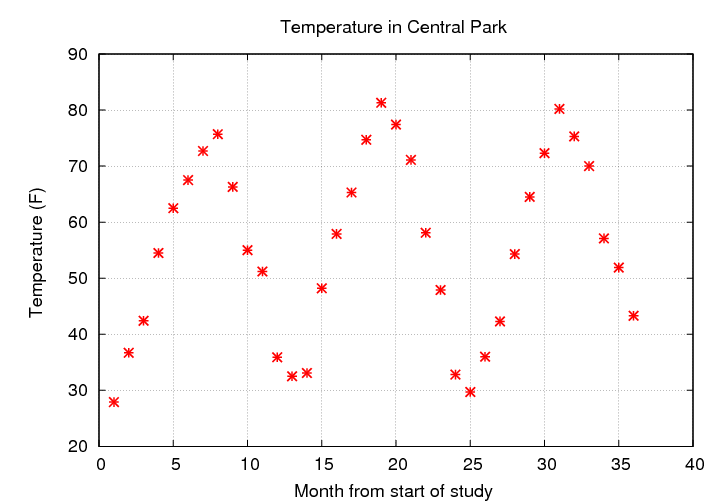
A squirrel monitors the temperature of his home in Central Park, NY City, for several years. His measurements are shown above and are in this data file .
- What is the amplitude of the changes in temperature?
- What is the period of the changes in temperature?
- What is the angular frequency of the changes in temperature?
- Can you write an equation which yields temperature (F) as a function of months since the start of the study?

- What is A in the equation above?
- What is ω in the equation above?
- What is the period of oscillation?
- What is the maximum speed of the block?
I stop the block and again place it at the rest position of the spring. Then I pull it a larger distance from the wall, x = 0.2 m, and release it.
- What is the period of oscillation now?
- What is the maximum speed of the block now?
- What is the moment of inertia of the rod around this hole?
- What is the force of gravity on the rod?
- What is the torque on the meterstick?
- Write an equation which shows the angular acceleration of the meterstick.
- Write an equation which shows the angular acceleration of the meterstick as a function of the angular displacement.
- Does the meterstick undergo simple harmonic motion? Explain.
- What is the period of the meterstick's oscillation?
I now move the meterstick so that it hangs at angle of theta from the vertical.
I release the meterstick.
 Copyright © Michael Richmond.
This work is licensed under a Creative Commons License.
Copyright © Michael Richmond.
This work is licensed under a Creative Commons License.